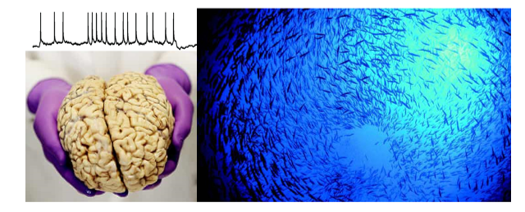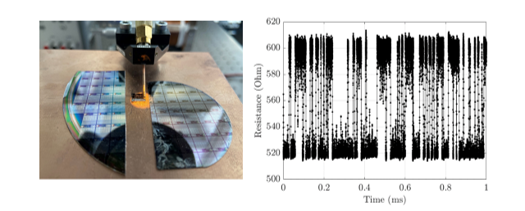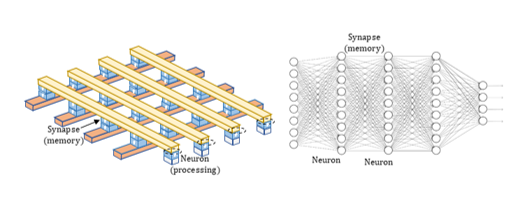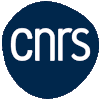Overview
The transversal team aims at bringing together all competencies from SPINTEC involving spintronic devices nanofabrication, characterization, circuit integration, architecture, and algorithm techniques to implement hardware solutions for artificial intelligence (AI) and unconventional computing.
Spintronic-based multifunctional devices are a substantial opportunity to improve the energy efficiency of next-generation computing hardware. Moreover, this approach allows taking advantage of brain-inspired computing models to deploy cutting-edge neuromorphic algorithms, crossing the gap between current hardware AI implementations and exceptional brain computing ability.
Research topics
Bio-inspired computing

As the brain performs very sophisticated operations and consumes only a few Watts, brain-inspired/neuromorphic computing is a promising path for which spintronic devices can efficiently emulate both neurons and synapses in hardware. Their nanometric size, sensitivity to input stimuli, and interactions make those devices ideal for implementing large arrays of neuro-synaptic elements: spintronic nano-oscillators, spintronic and ferroelectric memristors, magnetic memories, superparamagnetic tunnel junctions, skyrmions, etc.
Probabilistic computing

Noise is a crucial ingredient in emulating the stochastic nature of the neural activity and executing energy-efficient computing algorithms such as energy-based or temporal-based machine learning models. In this context, probabilistic computing is a very suitable approach that relaxes usual precision computing constraints. The truly random nature of spintronic devices (such as superparamagnetic tunnel junctions) makes them attractive for hardware implementations of probabilistic computing approaches.
In memory computing

The most promising solutions for non-Von Neumann, in-memory computing architectures are based on the use of emerging technologies, that are able to act as both storage and information processing units thanks to their specific physical properties. High accuracy, Deep neural networks (DNN) can be built with crossbars analog in memory computing concept, involving MRAM families, such as STT, SOT, VCMA, but also with more exotic families of magneto-resistive, and ferroelectric or skyrmion based devices.
The team
Projects
Partners
- CEA LIST
- UMPHY
- CEA LETI
Recent news
- Seminar – Can magnetic tunnel junctions help make cognitive computing more efficient (June 14th, 2023)

On Wednesday July 5th 2023, we have the pleasure to welcome in SPINTEC Mark Stiles from NIST. He will give us a seminar at 14:00, entitled : Can magnetic tunnel junctions help make cognitive computing more ... - Seminar – Neuromorphic Spintronics: Doing more with less (March 03rd, 2023)

On Wednesday, March 15th 2023, we have the pleasure to welcome in SPINTEC Prof. Flavio Abreu Araujo from Institute of Condensed Matter and Nanosciences UCL Louvain. He will give us seminar at 16:00, entitled : Neuromorphic ... - [Filled] Assistant Professor position – Design of spintronic circuits for artificial intelligence (February 03rd, 2023)
![[Filled] Assistant Professor position - Design of spintronic circuits for artificial intelligence](https://www.spintec.fr/wp-content/uploads/2022/12/FM_Lorena_2022-100x70.png)
SPINTEC is opening a tenured assistant professor/lecturer position in the field of frugal digital electronics, design of embedded systems, design of digital architectures in disruptive technologies (MCF section 61-63). The recruited person will carry out ... - Masters thesis projects for Spring 2023 (September 21st, 2022)

You find here the list of proposals for Master-2 internships to take place at Spintec during Spring 2023. In most cases, these internships are intended to be suitable for a longer-term PhD work. Interested Master-1 ... - [POSITION FILLED] Post-doctoral position (August 04th, 2022)
![[POSITION FILLED] Post-doctoral position](https://www.spintec.fr/wp-content/uploads/2022/04/logo_postdoc_offer_spintextures_04_2022-100x70.png)
Context: In the frame of different European and French national projects, SPINTEC has several openings for postdoctoral positions. The projects consider memory, microwave and sensor functionalities to develop novel hardware concepts for unconventional computing, to ...







